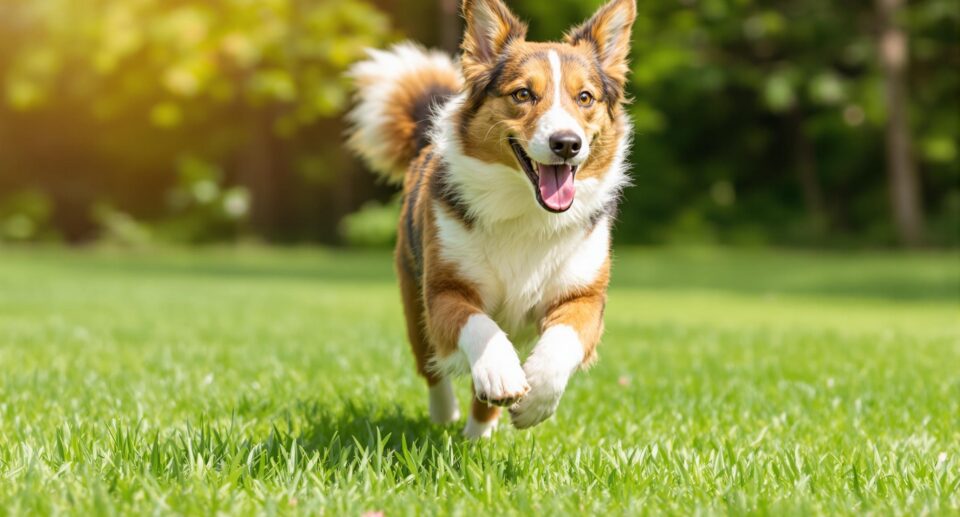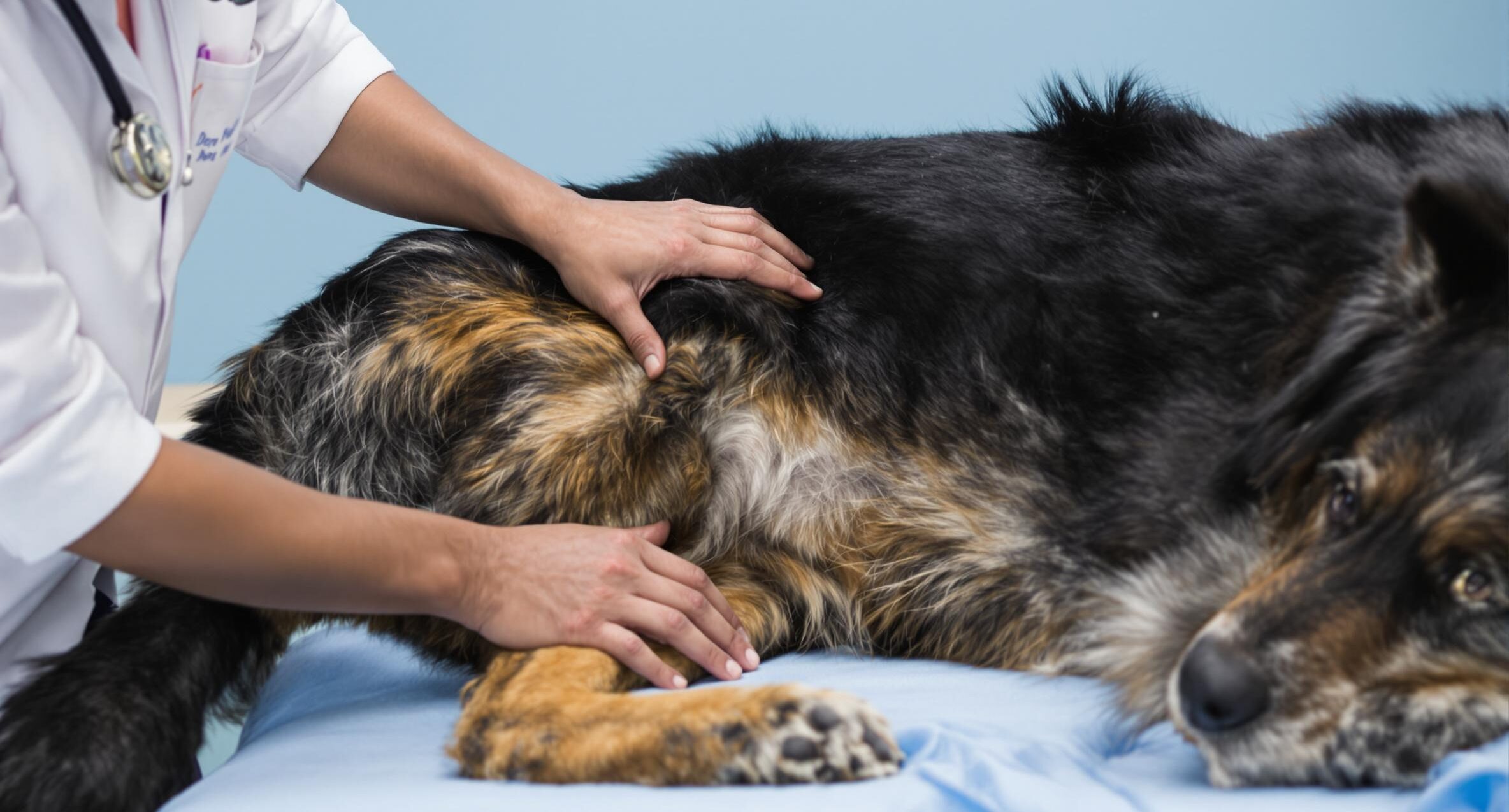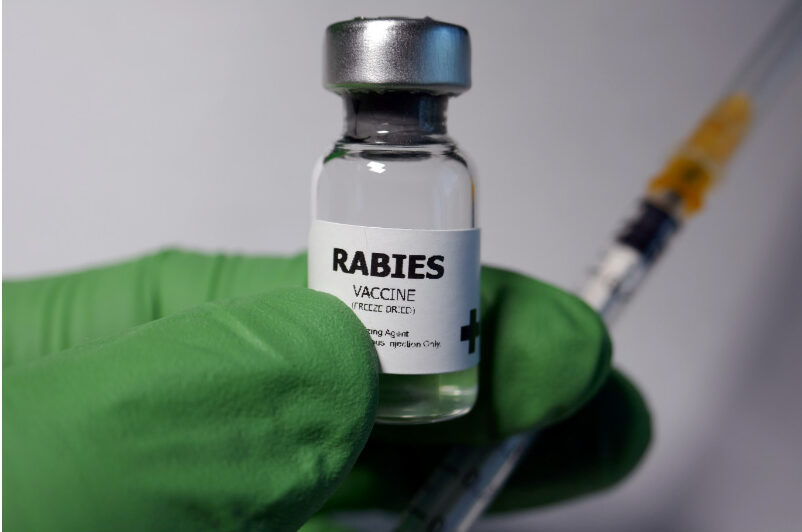All About Your Samoyed: Care Guide and Breed Info
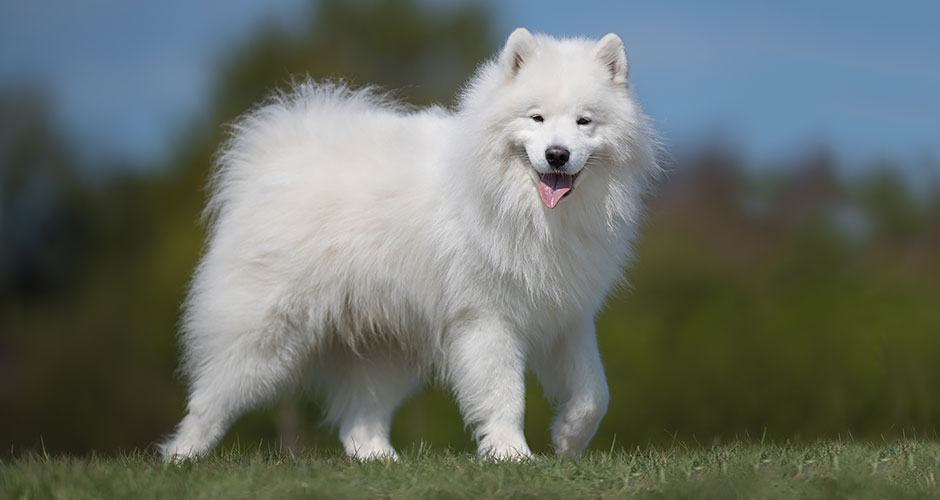
Instantly recognizable by their winning “Sammy Smile,” the Samoyed has been adored internationally for more than a century. Whether you’re a long-time Sammy owner, anticipating the arrival of a Samoyed puppy, or just a fan of all breeds, you’ll love getting to know these Arctic adventurers turned beloved household companions.
Learn about the Samoyed breed history, breed standard and traits, and best care to prevent and manage common health issues in Sammies.
How the Samoyed Came To Be
The Samoyed breed gets its name from the Samoyedic peoples of Arctic Russia, the region formerly known as Siberia, located in Northern Asia. The dogs were originally bred and trained to pull sleds and hunt and herd reindeer.
Off-duty, these dependable working dogs were adored members of the family. They were beloved companions, playmates, and faithful guardians to children, and even slept indoors, keeping their family warm and cozy on frigid Arctic nights.
Unsurprisingly, European explorers fell in love with the breed and began to use Samoyeds to pull sleds on Arctic expeditions. By the early 20th century, Samoyeds were brought into the UK and the United States, where they became officially recognized by national kennel clubs.
Samoyed Breed Traits
The Samoyed is an ancient aboriginal breed, meaning the breed has not changed much since it was first recognized. Today, the modern Samoyed still demonstrates the same work ethic, playfulness, and devotion to their human family members as their predecessors from hundreds of years ago.
Samoyeds have a thick, double layered coat with a dense, insulating undercoat that makes it possible for them to withstand sub zero temperatures. Males tend to have a thicker mane or “ruff.”
While early Samoyeds came in other colors, including solid black and black with white markings, the dogs have been selectively bred to eliminate other colorings.
Today, only white purebred Samoyeds are possible without cross-breeding. White with slightly off-white “biscuit” coloring, usually apparent around the ears, or all-over biscuit coloring are also accepted according to the AKC breed standard.
The Samoyed has a black nose and dark brown or black eyes. Blue-eyed Samoyeds are uncommon, but they do exist. Light-colored eyes are considered a fault and are not accepted in the show ring.
The Samoyed is a medium to large breed that stands around 21” at the shoulder. The ideal weight, according to the AKC breed standard, is 45–65 pounds for males, and 35-50 pounds for females.
Common Health Issues in Samoyeds
The Samoyed is a relatively hardy breed with a life expectancy of about 12 to 14 years. Like any other breed, the Samoyed is genetically susceptible to certain health issues.
Samoyed hereditary glomerulopathy is a form of kidney disease caused by a genetic mutation on the X chromosome. As a result, the disease develops more quickly and is more likely to be life-threatening for males. According to the Samoyed Health Foundation, affected dogs may show symptoms of kidney dysfunction as early as three months of age. Unfortunately, this condition cannot be cured, and can be fatal to males by fifteen months.
Hip dysplasia as in other medium to large breeds, is common in Samoyeds. In dogs with hip dysplasia, the ball-and-socket joint of the hip is shallow. Dogs can have little to no symptoms until they get older, when muscles supporting the hip joint become weaker. Hip dysplasia can result in an altered gait, osteoarthritis, and chronic pain. Pain management medication, and sometimes surgery, may be recommended to treat this condition.
Diabetes which in dogs is typically similar to Type-1 or insulin-dependent diabetes in humans, is common in Samoyeds. According to the Samoyed Breed Club of America, Samoyeds are up to 20 times more likely to be diagnosed than dogs of other breeds. Samoyeds diagnosed with diabetes need daily insulin injections, but otherwise can live a relatively healthy, normal life.
Eye issues are common in Samoyeds. Posterior Lenticonus, a congenital condition in which cataracts form in one or both eyes, is typically diagnosed in young dogs around one to three years of age. In dogs with cataracts, the clear lens of the eye becomes cloudy, and there may be moderate to total vision loss. Samoyeds are also susceptible to developing cataracts as a complication of diabetes.
How To Care for Your Samoyed
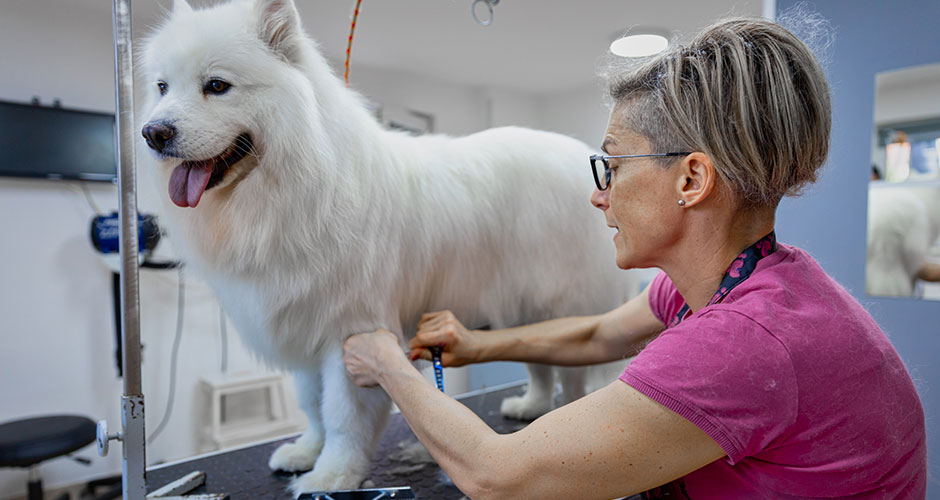
Like other double-coated breeds, Samoyeds should not have their coat clipped, but should be brushed to manage shedding
While most Samoyeds may no longer pull sleds through the frozen terrain of North Asia, they’re still equipped with the drive, work ethic, and intelligence of their predecessors. For the modern-day pet parent, this means you’ll need to engage your Samoyed’s mind and body with plenty of obedience training and exercise.
Without adequate exercise and mental stimulation, Samoyeds can become destructive. They enjoy digging, and can be offered an appropriate digging area like a sand pit as an outlet for this behavior.
Your Samoyed should eat high-quality dog food that meets or exceeds Association of American Feed Control Officials (AAFCO) standards. Puppies should be fed a complete and balanced puppy food – a large puppy food is not necessary – until one year of age, then you can transition to an adult dog food. Your dog should always have access to clean, fresh water.
Like other dogs, Samoyeds should see their veterinarian for a wellness visit at least once a year. Monitor your dog for signs of diabetes, like changes in weight, appetite, drinking and urination, and see your vet as soon as possible if you notice these or any other symptoms of illness or injury.
The breed is prone to adverse reactions to sulfa drugs or sulfonamides, a type of antibiotics used to treat infections. Your Samoyed’s medical records should include a note to let your veterinarian know to prescribe an alternative medication, if needed.
Why We Love Samoyeds
Samoyeds have a gentle, playful nature that makes them wonderful family companions. They love to be close to their people and they’re intelligent, highly trainable, and eager to please. Samoyeds have a lot of energy and thrive in dog sports including agility, skijoring, dog sledding, and treibball.
If you’re hoping to adopt a Samoyed of your own, look for a reputable breeder that screens their breeding stock for genetic health issues like hip dysplasia, Samoyed hereditary glomerulopathy, and cataracts. You can find a Samoyed through the AKC breeder directory, the Samoyed Club of America, or through a breed specific rescue.

